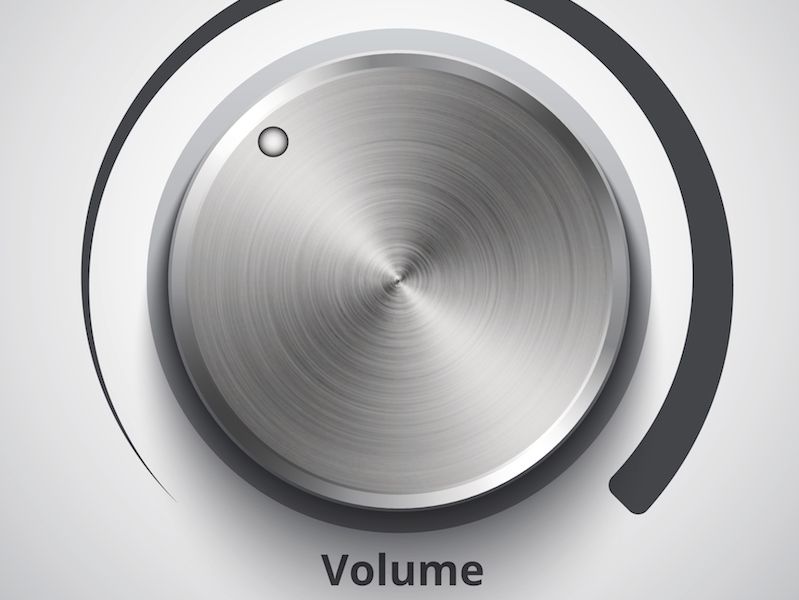
Have you ever seen the “Beware of Sharks” sign when you go to the ocean? It’s easy to realize that you should never disregard a warning like that. You may even think twice about swimming at all with a sign like that (if the sign is written in big red letters that’s particularly true). But people don’t tend to pay attention to warnings about their hearing in the same way for some reason.
Current research has found that millions of individuals neglect warning signs regarding their hearing (this research exclusively considered populations in the United Kingdom, but there’s no doubt the problem is more global than that). Knowledge is a huge part of the issue. It’s fairly intuitive to be scared of sharks. But most individuals don’t have an overt fear of loud noises. And the real question is, what’s too loud?
We’re Surrounded by Hazardously Loud Sounds
It isn’t only the machine shop floor or rock concert that present dangers to your hearing (although both of those situations are, without a doubt, harmful to your hearing). There are potential hazards with many common sounds. That’s because it’s not exclusively the volume of a sound that is dangerous; it’s also the duration. Even low-level noises, including dense city traffic, can be damaging to your hearing if you are exposed for more than two hours.
Generally speaking, here’s an approximate outline of when loud becomes too loud:
- 30 dB: This is the volume level you would expect of everyday conversation. You should be just fine at this volume for an indefinite period.
- 80 – 85 dB: An air conditioner, dense traffic, and a lawnmower are at this volume. This level of sound will usually become damaging after two hours of exposure.
- 90 – 95 dB: A motorcycle is a good illustration of this sound level. This level of exposure becomes dangerous in as little as 50 minutes of exposure.
- 100 dB: An approaching subway train or a mid-sized sports event are at this sound level (depending on the city, of course). This volume can become hazardous after 15 minutes of exposure.
- 110 dB: Have you ever cranked your Spotify music up to ten? That’s normally around this volume on most smartphones. This amount of exposure becomes dangerous after only 5 minutes of exposure.
- 120 dB and over: Instant pain and damage can happen at or above this volume (consider an arena sized sporting event or rock show).
How Loud is 85 dB?
Generally, you’re in the danger zone when you’re dealing with any sound 85 dB or louder. But it can be hard to distinguish how loud 85 dB is and that’s the problem. A shark is a tangible thing but sound isn’t so tangible.
And that’s one of the reasons why hearing cautions frequently go ignored, specifically when the sound environment isn’t loud enough to cause pain. There are a couple of possible solutions to this:
- Get an app: There isn’t an app that will directly protect your ears. But there are a few sound level metering apps. Injury to your hearing can occur without you recognizing it because it’s hard to know just how loud 85 dB feels. Using this app to monitor noise levels, then, is the solution. Using this strategy will make it more instinctive to identify when you are moving into the “danger zone”. (and you will also recognize right away when things are getting too loud).
- Sufficient signage and training: This particularly pertains to the workplace. The significant dangers of hearing loss can be reinforced by training and sufficient signage (and the advantages of protecting your hearing). In addition, just how loud your workspace is, can be clarified by signage. Helping employees know when hearing protection is recommended or required with appropriate training can be really helpful.
If You’re in Doubt, Protect Yourself
No app and no signage will ever be perfect. So when in doubt, take the time to protect your hearing. Over a long enough duration, noise damage will almost certainly create hearing issues. And it’s easier than ever to damage your ears (all you have to do is turn your earpods up a little too high).
If you’re listening to headphones all day, you should not turn up the volume past the mid-mark. You require noise cancellation headphones if you are always turning up the volume to block out background sound.
So when volume becomes too loud, it’s important to acknowledge it. And to do this, you need to increase your own awareness and knowledge level. Safeguarding your ears, wearing ear protection, or decreasing your exposure, is pretty simple. That begins with a little recognition of when you need to do it.
Nowadays that should also be easier. Especially now that you know what to be aware of.
Think you might have hearing loss? Schedule an exam.
[blogcta]
